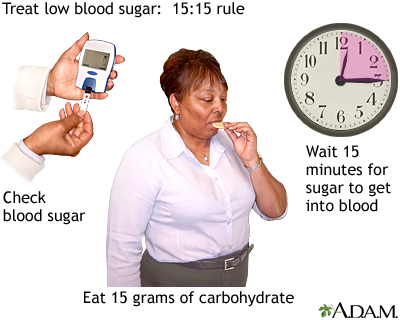Physical Address
304 North Cardinal St.
Dorchester Center, MA 02124
Physical Address
304 North Cardinal St.
Dorchester Center, MA 02124

Contents
Low blood sugar, also known as hypoglycemia, is a common concern for individuals with diabetes, especially those who take insulin or certain medications to manage their condition. When blood sugar levels drop below 70 mg/dL, it is considered low and requires prompt action to prevent potentially dangerous consequences. In this article, we will delve into the causes, symptoms, and types of low blood sugar, as well as explore the critical question: What level of low blood sugar is considered dangerous?
Low blood sugar can be triggered by various factors, including taking too much insulin, not consuming enough carbohydrates in relation to insulin intake, the timing of insulin administration, physical activity, alcohol consumption, meal composition, weather conditions, changes in routine, altitude, puberty, and menstruation. Understanding these causes is crucial in managing and preventing episodes of low blood sugar.
The signs of low blood sugar can vary from person to person, making it essential to recognize your individual symptoms. Common symptoms include a fast heartbeat, shaking, sweating, nervousness, irritability, dizziness, and hunger. However, some individuals may experience hypoglycemia unawareness, where they have low blood sugar without noticeable symptoms, increasing the risk of severe lows and potential dangers.
Low blood sugar can occur at any time, including during sleep, leading to nighttime episodes. Factors such as physical activity before bedtime, excessive insulin intake, or alcohol consumption can contribute to nighttime hypoglycemia. Additionally, as low blood sugar worsens, individuals may experience severe symptoms such as weakness, confusion, seizures, and even loss of consciousness, with blood sugar levels below 54 mg/dL considered severe.
When encountering low blood sugar, it is crucial to act promptly to raise blood glucose levels back to a safe range. The 15-15 rule is a common approach, involving consuming 15 grams of carbohydrates and rechecking blood sugar after 15 minutes. For severe hypoglycemia, where blood sugar drops below 55 mg/dL, immediate treatment with injectable glucagon may be necessary to prevent further complications.
Prevention is key in managing low blood sugar. Strategies such as proper insulin dosing, balanced meal planning, regular blood sugar monitoring, adjusting insulin before exercise, and having fast-acting sugar sources on hand can help prevent episodes of hypoglycemia. Educating family members, friends, and caregivers on how to assist in case of severe lows is also essential for overall safety.
If low blood sugar persists or becomes recurrent, consulting a healthcare provider is crucial to evaluate insulin dosing, dietary habits, and overall diabetes management. Keeping track of blood sugar levels, insulin administration, physical activity, and food intake can aid in identifying patterns and preventing future episodes of low blood sugar.
By understanding the causes, symptoms, and management strategies for low blood sugar, individuals with diabetes can effectively navigate the challenges associated with fluctuating blood glucose levels and prioritize their health and well-being.